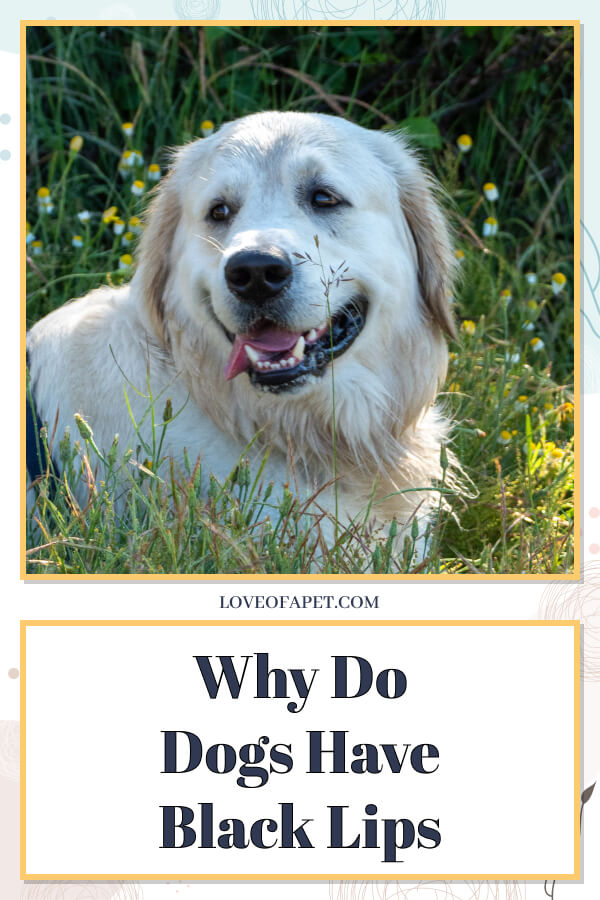Dogs are creatures of habit, and the way they go about their daily routine is fairly predictable. Dogs typically eat twice a day, sleep at least twelve hours per night, walk for an hour or more each day, and take care of their personal hygiene needs.
Yet, there are some things that even the most attentive dog owners may not notice about their canine companions – things like black lips. Have you ever looked your dog in the mouth to see what color it is? If so then you know that many breeds have black lips while others do not. But why do dogs have black lips? And how can we tell if our pup has black lips? The answer to these questions will be revealed below!
Contents
Why do dogs have black lips?
Some breeds have black lips. It is unknown why certain breeds have black lips, but this seems to be an issue that doesn’t bother many dog owners. Most people are suspicious of the origins of their dog’s mouth, but surprisingly, black lips are not seen as a sign of illness in most cases.
Dog black lips are formed by melanocytes, which create pigment. It’s important to understand that the color of your dog’s nose and outer lining around their mouth is related to how much melanin they have in their genetic makeup. A dog’s lips are exposed to the sun because they do not have as much hair on them as most other parts of their body. Dogs with darker noses and mouths typically offer better natural protection from the sun than those without as much melanin in their genetics. Aside from shielding this region from the sun, the pigment also protects the region’s skin against solar radiation damage.
The gene that provides black color is dominant over all other colors, so any dog with black lips has at least one parent born with that color. Not all dogs have black lips though; some breeds may have a lack of pigmentation in their oral cavity, and other breeds may have a piebald coloration, where the color is alternated between dark and light.
As we know, not all dogs are born with black noses and lips; some will still be lighter shades such as Isabella (dusty), liver (brown), blue (grey), or even white, depending on what genes they inherit. Thanks to genetics being fickle! The most common colors for these features are Isabella, dusty brown; liver, brown/dark brown; and blue, which are grey/dark grey and true black.
Why Are Your Dog’s Lips Turning Pink?
The pink color of your dog’s lips is most likely the result of depigmentation, and it is not always a life-threatening condition. If your dog’s lips are turning pink but otherwise seem the same, this is probably just a loss of color. An example of this can be seen in Rottweilers and Doberman Pinschers, but it is also seen in other breeds. Pink lips, like nose discoloration in dogs, maybe seasonal and influenced by daylight changes.
However, if your dog’s dark lips start turning pink as they age, as is possible with vitiligo, it is only cosmetic and does not cause harm to the dog. The disorder that causes this is an immune-mediated destruction of melanocytes. There is no effective treatment for this disorder and no way to prevent it until the entire region becomes pink. The only thing you can do if your dog is not neutered and does not have any other lesions such as ulcers or crusting, they should not be bred because it would be a trait that wouldn’t be desirable in a dog.
If any change in skin color appears, it is advisable to visit the veterinarian so that it can be examined. It is possible the color change was caused by an allergic reaction or some other disorder. Loss of pigmentation on a dog’s lips is not apparent in puppies but appears when they reach adulthood.
Lip Depigmentation Causes in Dogs
The outer edge of a dog’s mouth is a very well-known area because it is often well-pigmented. The degree and pattern in which a dog is normally pigmented can differ depending on the breed and individual dog. In order to determine whether an alteration in the pigment will be considered as a pathology, it should be based on what is normal for each dog and the presence or absence of inflammation.
When there is inflammation, this may lead to depigmentation, whereas chronic inflammation can lead to hyperpigmentation. But first, a quick explainer:
Depigmentation in dogs means the loss of the normal skin pigment which is called melanin. Melanocytes are cells that produce melanin. And when it comes to pigment, there are two different types – eumelanin and phaeomelanin. Eumelanin makes up black/brown/grey coloration, while phaeomelanin makes up the red/yellow coloration. Depigmentation basically means loss of melanin production.
Melanocytes are found in dogs at birth, but the pigment doesn’t start to develop until 6-8 weeks of age. And for dogs with black coats, mature melanocyte cell bodies are found in the hair follicles and in the basal layer of the epidermis. So, what this means is that pigment cells actually migrate to the location where their color will be expressed.
One of the changes associated with skin conditions is a condition known as hyperpigmentation. It is a condition in which there is an increase in dark pigmentation on the skin.
Hyperpigmentation is a secondary change in a dog’s skin. It occurs for many reasons, and if the skin pigment accumulates, this will cause darkening of the skin.
Hyperpigmentation may be the only change noted or there may be other associated symptoms. It can affect areas of thickened skin that are rough or feel like velvet to the touch, along with hair loss, scaling, crusting and itchiness. Hyperpigmented skin may also manifest as moist or sweaty compared to typically dry skin on the rest of the body.
Here are the top five reasons for canine lip depigmentation:
1) Vitiligo
Vitiligo is a skin condition that causes the skin to lose its natural pigment. The skin cells, called melanocytes, produce the pigment that gives skin its color, and vitiligo can cause them to die off or be destroyed. Vitiligo is painless and won’t bother your pet at all.
2) Discoid Lupus Erythematosus
Discoid lupus erythematosus is a very rare condition that only affects the skin. This condition primarily occurs in dogs and is more common than other types of cutaneous lupus. Symptoms include crusting and scabbing of the skin and a loss of pigment in the affected area.
3) Mucocutaneous Pyoderma
Mucocutaneous pyoderma (MCP) is a bacterial infection that usually affects dogs’ lips and peri-oral skin. The cause is unknown, but it typically responds to antibacterial treatment. Mucocutaneous pyoderma primarily affects the mucocutaneous junctions of the nasal planum and lips, but they can be found in other body parts. MCP usually starts out reddening and swelling at the nasal planum, with crusts coming later on.
4) Uveodermatologic Syndrome
The condition in humans is known as Vogt-Koyanagi-Harada syndrome, a disease that produces a variety of symptoms. Dogs can also get a similar condition called uveodermatologic syndrome, but it usually does not produce any signs of nervous system problems.
Uveodermatologic Syndrome occurs when the immune cells attack the body’s pigment cells, especially cells in highly pigmented organs like the eyes and skin. It happens most commonly in Nordic breeds like Siberian Huskies, Shetland Sheepdogs, and Akitas. Exposure to sunlight may exacerbate the problem.
5) Epitheliotropic Lymphoma
Epitheliotropic lymphoma is a cancer of the immune system cells (lymphocytes). It usually begins in the superficial layers such as the skin and can present as redness, plaque-like lesions, scaling, ulcerations or nodules. A definitive diagnosis requires a biopsy to be carried out.





